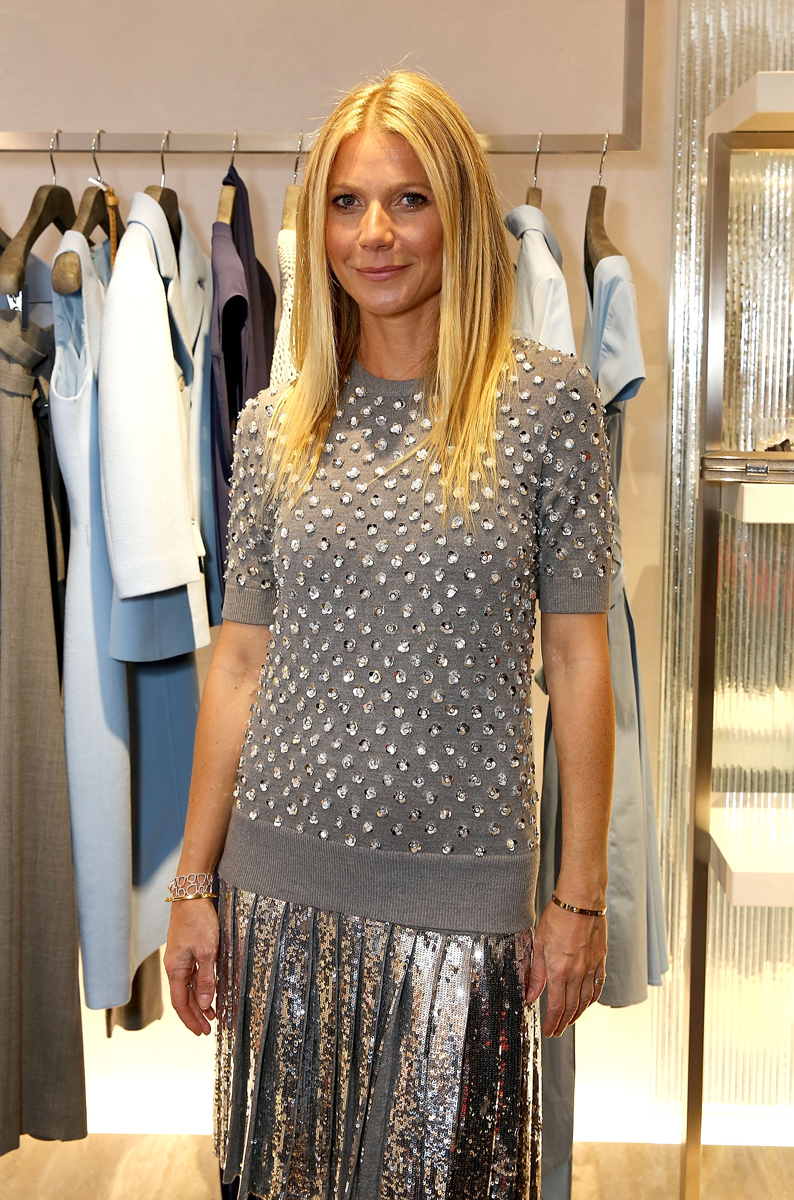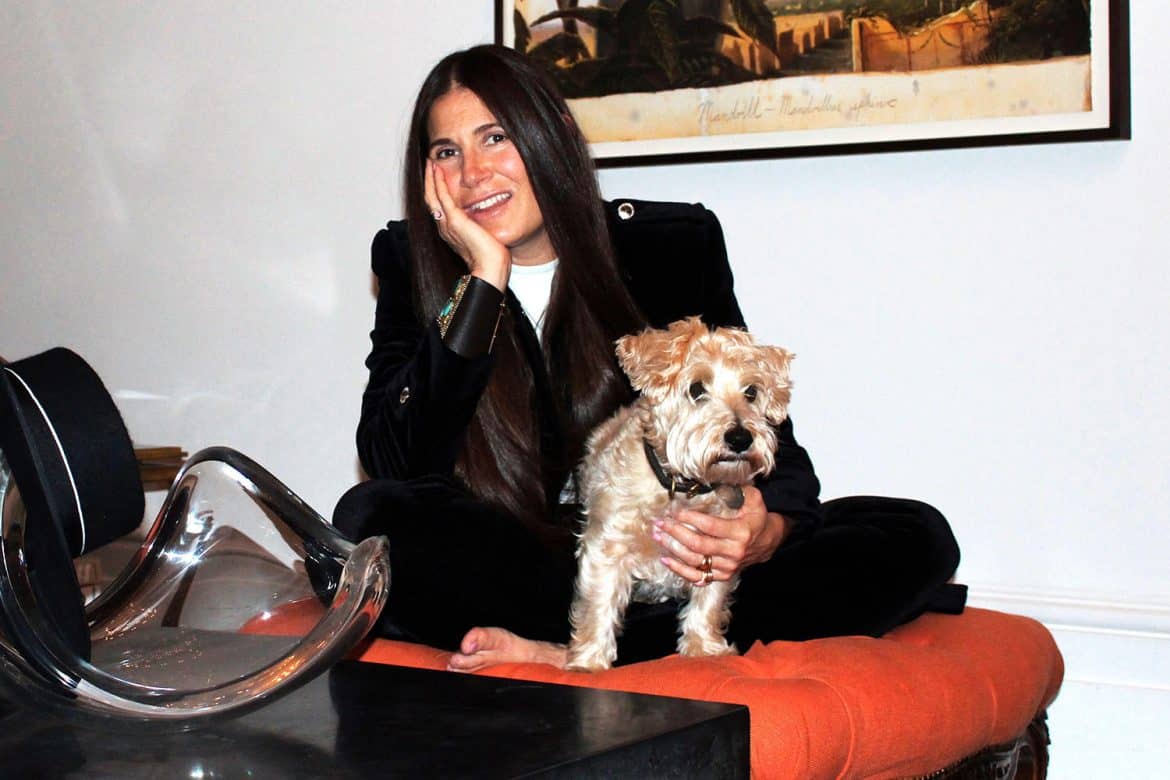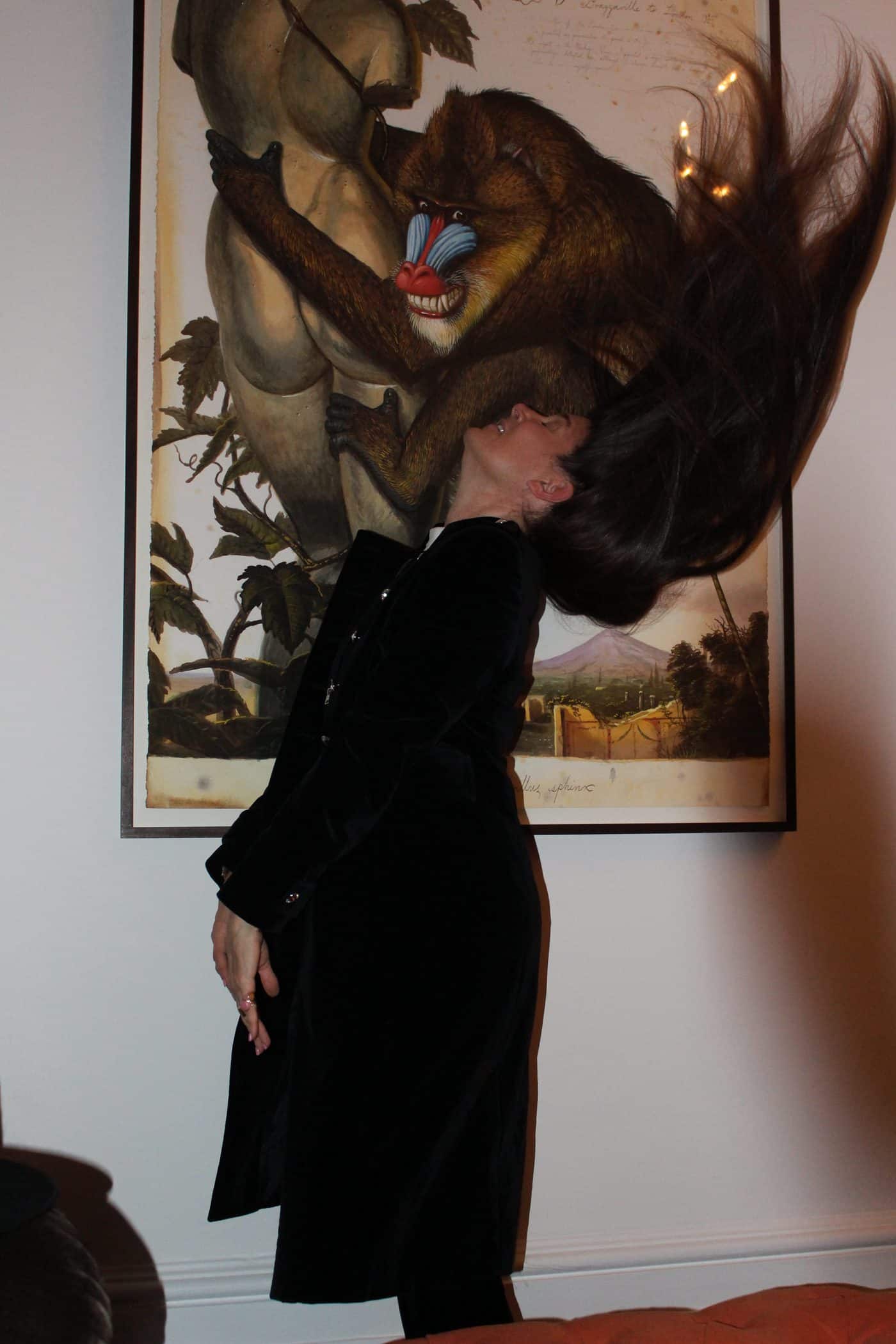By Brian Wolk and Claude Morais.
Elizabeth Saltzman is a New York original. Born and raised on the Upper East Side to parents who worked in fashion and interiors, style is Saltzman’s mother tongue. Her career is a storybook tale of vision and resilience; grounded in a resolute belief that fashion should instill confidence and bring forth the best version of oneself.
Saltzman’s celebration of the individual began early on during her formative years as an ingénue of NYC’s ’80s downtown art and club scene. And true to her cinematic style, one evening while working at the iconic Area Night Club, a chance encounter with Giorgio Armani’s then-president Gabriella Forte sparked a life long career in fashion leading to her work as senior fashion editor at Vogue, fashion director at Vanity Fair. She is also an acclaimed celebrity stylist and brand consultant whose client list includes Gwyneth Paltrow, Saoirse Ronan, and Poppy Delevingne. In between fittings, we were lucky enough to spend a little time around the kitchen table in the Holland Park home of London’s leading lady of fashion.
Where did you grow up?
Manhattan on the Upper East Side, in the same apartment my mother grew up in. She actually never moved her entire life. It’s a lovely address, but I didn’t grow up with a silver spoon in my mouth. I had working parents. My dad was an amazing interior designer and my mom worked in fashion. She started out as a junior editor at Glamour and than she became the fashion director at Sak’s Fifth Avenue. She also did work for Macy’s and Bergdorf’s before my father got ill, and then she did the right thing and took care of him.
What you first memorable fashion purchase?
I remember it clearly because everyone teased me about it! I wanted a poncho so badly, and my mother did not want me to have one. But I begged, and pleaded and manipulated and promised to do all the right things and she finally gave in. But I didn’t want to wear it as a poncho… I wanted to wear it as a long skirt! And so, I wore my poncho as a long skirt every day. My mom was super cool because she let me be myself. She fought with me about what to wear for a while, but by the time I was 11, she let me roll.
What was your first gig in fashion?
I worked since I was about 14 years old at stores. I needed a job, my parents made me work. I would fold clothes — I loved to clean up. I still love an organized closet. My first real break was the job I got at a store called Parachute. There I met James Jebbia, Ruben Toledo, and Wilfredo Rosado. All of the groovy kids worked there. That’s where I first understood and came into contact with cool downtown culture. At the same time I was also working part time at AREA nightclub. I love working at Area and NYC’s incredible nightlife. In fact that’s where Gabriella Forte asked me to interview for a job at Giorgio Armani.
At the time I thought she wanted me to run the world, I was all of 18, and thought I would be the CEO of Armani, but I ended up getting a job as stock girl, and it was brilliant, the greatest experience ever! You really learn from the bottom up. It really taught me never to judge people. The person who came in looking shabby, and messy, would be the one who dropped $150,000, where as the woman or man who came in looking perfect, and needed 6 people to swan about them would never spend anything. You know the drill!
How has your creative process as a stylist been informed by those formative years at the club and working in retail?
People got dressed for themselves not for their cameras/phones. It wasn’t about snapping photos; it was about being present, being creative, what you can make with a piece of plastic. How you can you create a different look without money, cause none of us really had any. We wanted to dance and have fun. You did not define people by “the have and have-nots,” we were all in it together cause we wanted to dance! It didn’t matter if someone was a movie star, or the biggest musician, a make-up artist, drag queen… everyone was mixed.
I didn’t feel little, I didn’t feel unheard, I didn’t feel important, I just felt like one person and part of the community. I am so missing a community. Thats why Kanye West is so important with Sunday Service right now. People aren’t going to church the same way as a family, people don’t have a community. I think that also the reason why AA works, people need a sense of community. All for one, one for all, which is what the ’80s art world was all about. It was a real scene, but not a cut throat viscous scene. It was super supportive.
How do you think the new digital communities compare to those of your youth?
It’s not real. I have two children who see that everyone is doing something else, everyone is somewhere, they feel left out. They don’t feel beautiful. They can talk to me about it, which is wonderful, but they aren’t talking to their friends about it and that’s not wonderful. Everything is a filter. You filter your feelings. We used to speak in a different way; there is less communication and more information.
I like things to be lateral, a group. That why I loved the new Marc Jacobs show, because they entered as a group, a community, there was no lead girl. On the other side because of Instagram, our elite fashion world is more accessible to those who dream about it and might not live in New York City in the ’80s. They can get into the business. I have people from all over the world DMing me and texting me showing me their work, and I think, wow, how would that person have every got in contact with me every before?
How is being an editor different than working with your celebrity clients?
I don’t think it is that different, I treat everyone equal. There is just a lot more opinions and people involved when you’re dealing with celebrities, as opposed to being an editor where it is the just the photographer, hair, and make up. Actresses, like models, are playing a role on the red carpet. They don’t live their regular life on the red carpet. It’s a lot of confidence building.
I try to be selective as possible of what I call in. I don’t have a dozen racks of clothes — I don’t want to waste the talent’s time, I don’t want to waste a designer’s chance of getting a look on someone else, I don’t want to waste money. I try to make each client the best version of themselves, not necessarily my vision of them. When you know your client well, you know what will work. We make sure we measure everything before clients come in, open up a seam in advance if necessary, it about making people feel good. My team has an unwritten language.

Gwyneth Paltrow (Getty Images)
Tell us about moving to London!
What was great about moving to London is that I was such a hard-core believer in America. I thought I knew America, but in reality I only knew the East Coast and the West Coast. You don’t really know America until you have seen it all. Coming to London was scary, there were a lot of people here who were American but I wanted to avoid them all, except two friends who now live [Los Angeles]: Richard [Buckley] and Tom [Ford]. I just wanted to get in with the English. It was the same way as an Upper East Sider I needed to move to Bowery and Grand and divorce myself of anything above 14th Street. I am the same when I travel anywhere; I try and stay with locals to better understand the flavor.
London opened my eyes to talent that I hadn’t seen before, and didn’t understand. The Belgians, abstract shows, new schools of designers and artists. [Before] I was an American sportswear chick. My world was Bill Blass, Oscar, Geoffrey Beene, and Halston. My world opened up when I moved to London. And the proximity to Paris and Milan was incredible. It changed my work for Vanity Fair; it changed my relationship with designers and advertisers. Everyone passes through London, and I would host monthly dinners for whomever was rolling into town. I am super sure I was meant to be born swell and rich so I could be this grand host! I just want to be Lynn Wyatt basically! But I am not. She is fabulous.
Who are your style icons?
I have to pay homage to Jackie Kennedy and of course Bianca Jagger, who was my idol growing up because she was accessible. I could see her skin-tone, her irreverence, her bravado. I can’t leave out Charlotte Rampling and Jane Birkin, whom I could never understand because she was so cool. Diana Ross, and of course and all the gorgeous men who used to dance at the [Paradise] Garage. I just was blown away, it was like Fame.
What’s you uniform?
I wear black to work. Black velvet pants, blazer, and white silk t-shirt. When I am myself, I wear colors. Colors are my freedom as you can see by love for Hawaiian prints in my home. For evening I love white, navy blue, gold, and a hint of pink or orange. I like dead-on simplicity. I don’t want to think about me; I want to think about my family, my husband, kids, and the people I work with.
In an alternate universe if you weren’t a stylist, what would you be?
I wanted to be an architect. That was the dream. But in those days there weren’t computers, and I wasn’t going to take seven years of math! Than I really wanted to have a talk show because there were no female talk show hosts when I was growing up and you could only watch men interviewing people. I liked Barbara Walters and her interviews were very important, but she wasn’t necessarily cool. And then I really wanted to own Playboy more than anything. I was obsessed with owning Playboy because I think it gave power to women, especially if you did it the right way like it was in the ’70s. Brilliant interviews, beautiful photographs of women, but I soon figured out it wasn’t possible because of the licensing deals. Why would empower someone else to get rich off of your brand work?
What’s next?
I started planting trees for people. I believe in replacing everything I do with planting trees. It’s very, very important to me, trying to give back. You need to continue to give back. You can’t do one dress that’s “green” and than the next one is full of chemicals. If you own it, wear it, and if you don’t wear it, give it to someone who will love it. The good news is everyone is trying to figure it out. People want things that last. I don’t think you need that much stuff in life. I feel the luckiest for the people I have and love.
ABOUT OUR GUESTS INTERVIEWERS: Together, Brian Wolk and Claude Morais are the creative directors behind the critically acclaimed WOLK MORAIS fashion brand. Wolk Morais’ most recent collection made it’s way from the runway to the red carpet within days, appearing on talents including Cate Blanchett, Kendall Jenner, Julia Roberts, Janelle Monae, Constance Wu and Jessica Chastain. Wolk Morais latest Collection #8 was conceived as a film that debuted at London Fashion Film Festival last month where it received two nominations including best film and won Best Fashion Film Advertisement.
Subscribe to our newsletter and follow us on Facebook and Instagram to stay up to date on all the latest fashion news and juicy industry gossip.


